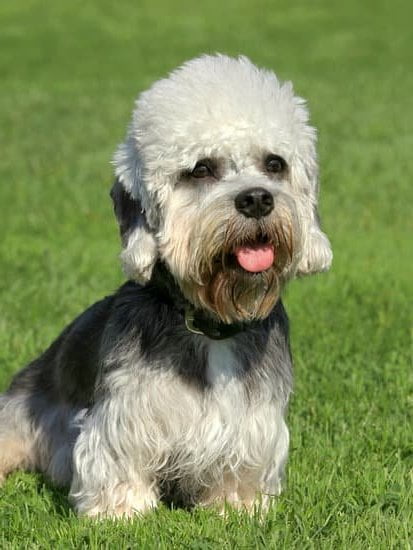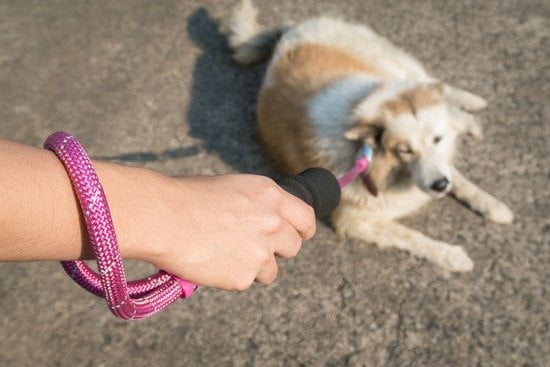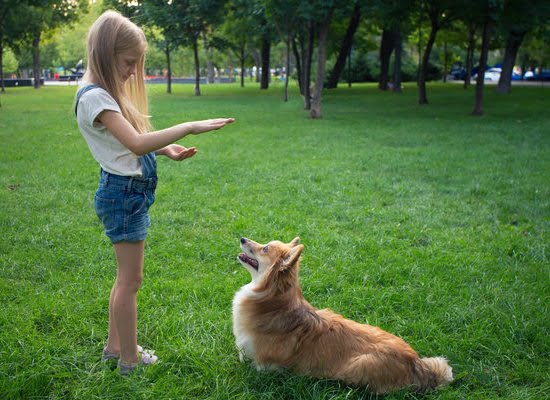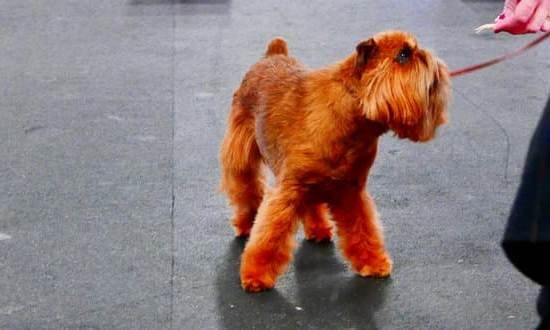What dog is the easiest small dogs to train? Small dogs are often beloved companions, but their behavior can sometimes pose challenges for their owners. In this article, we will explore the benefits of training small dogs and the impact it can have on their behavior. Additionally, we will highlight the bond that can be formed through training, ultimately creating a positive and enriching experience for both the dog and its owner.
Training small dogs is not just about teaching them basic commands; it is also about fostering a strong relationship built on trust and understanding. By investing time and effort into training, small dog owners can enjoy a harmonious coexistence with their pets. With the right approach, training can help small dogs develop good manners, social skills, and emotional stability.
Through training, small dogs can learn to respond positively to various situations and obey commands, leading to improved communication between them and their owners. This introductory section will delve into why training small dogs is crucial for their well-being and the overall quality of life for both the pet and its owner.
Characteristics of Easily Trainable Small Dog Breeds
Small dog breeds are known for their charm, cuteness, and loyalty, but not all of them are easy to train. When looking for a small breed that is easily trainable, it’s important to consider specific characteristics and traits that make the training process smoother and more successful. Understanding the key traits of easily trainable small dog breeds can help prospective owners make informed decisions about which breed would be the best fit for their lifestyle and training preferences.
Intelligence and Temperament
One of the most important characteristics of easily trainable small dog breeds is their intelligence. Breeds like the Poodle, Shih Tzu, Papillon, and Miniature Schnauzer are known for their high intelligence, which makes them quick learners during training sessions. Additionally, these breeds often have a friendly and eager-to-please temperament, making them more receptive to training and positive reinforcement techniques.
Trainable Small Dog Breeds
Some small dog breeds are naturally more responsive to training due to their breeding history and instincts. For example, the Cavalier King Charles Spaniel has a history as a companion dog, making them highly adaptable to human interaction and obedience training. Similarly, the Havanese breed is known for its sociable nature and desire to please its owners, making them relatively easy to train compared to other small breeds.
Training Techniques for Easily Trainable Small Dog Breeds
When it comes to training easily trainable small dog breeds, positive reinforcement methods tend to be highly effective. This includes using treats, praise, and rewards to reinforce desired behaviors during training sessions. These breeds respond well to consistency in training methods and thrive in environments where they feel secure and supported by their owners.
Understanding the characteristics of easily trainable small dog breeds can guide potential owners in selecting a breed that aligns with their training goals while also creating a harmonious relationship between owner and pet. By considering traits such as intelligence, temperament, and breed-specific instincts when choosing a small dog breed, owners can set themselves up for success in the training process.
Understanding the Training Process for Small Dogs
One of the most important aspects of training small dogs is understanding the training process. Effective training not only helps improve a dog’s behavior but also strengthens the bond between the pet and their owner. When it comes to small dogs, it’s essential to approach training with patience, consistency, and an understanding of their unique needs.
To start the training process for small dogs, it’s crucial to understand the basics of dog training. This includes teaching them basic commands such as sit, stay, come, and heel. Positive reinforcement techniques are highly effective with small dogs, as they respond well to treats and praise. Additionally, using clear and consistent communication will help small dogs understand what is expected of them during training sessions.
When it comes to specific methods and techniques for training small dogs, positive reinforcement is key. Using rewards like treats or toys encourages good behavior while ignoring bad behavior can also be effective. Additionally, utilizing clicker training can be beneficial for easily trainable small dog breeds.
Here are some tips for successful training sessions with small dogs:
- Keep training sessions short and engaging
- Use high-value treats as motivation
- Be patient and avoid using harsh punishment
- Offer plenty of praise and affection during and after training sessions
By understanding the fundamentals of the training process for small dogs and implementing effective techniques, owners can set their furry companions up for success in learning new behaviors. With patience and consistent effort, small dogs can become well-behaved pets that bring joy to their owners’ lives.
Top Small Dog Breeds That Are Easy to Train
Small dog breeds are often known for their intelligence, spunk, and trainability. When it comes to finding a small dog that is easy to train, there are several breeds that stand out for their willingness to learn and please their owners. One of the easiest small dogs to train is the Papillon. This breed is highly intelligent and responds well to positive reinforcement training methods. With consistency and patience, Papillons can quickly pick up on commands and tricks.
Another small dog breed that is known for being easy to train is the Cavalier King Charles Spaniel. These dogs are eager to please, gentle in nature, and respond well to early socialization and obedience training. Their affectionate disposition makes them a joy to work with during training sessions.
Additionally, the Poodle is considered one of the easiest small dogs to train due to its high level of intelligence and eagerness to learn new tasks. Poodles excel in obedience training and agility competitions, thanks to their superior problem-solving skills and adaptability.
Overall, these small dog breeds are excellent options for individuals looking for a trainable companion. Their intelligence, temperament, and willingness to learn make them an ideal choice for novice or experienced dog owners alike.
| Small Dog Breed | Trainability |
|---|---|
| Papillon | Highly trainable with positive reinforcement |
| Cavalier King Charles Spaniel | Eager to please and responds well to socialization |
| Poodle | Highly intelligent with superior problem-solving skills |
Training Tips for Small Dog Owners
Establish a Routine
One of the most important training tips for small dog owners is to establish a consistent routine. Small dogs thrive on structure and predictability, so it’s essential to set designated times for training sessions, feeding, walks, and playtime. By creating a routine, your small dog will know what to expect and when to expect it, which can be incredibly beneficial for their overall behavior and training progress.
Use Positive Reinforcement
When training small dogs, positive reinforcement is key. This means rewarding good behavior with treats, praise, or affection. Small dogs respond well to positive reinforcement and are more likely to repeat desired actions when they are rewarded for them. It’s important to avoid using harsh punishment or negative reinforcement, as this can lead to fear and anxiety in your small dog.
Be Patient and Consistent
Patience and consistency are crucial when training small dogs. Remember that all dogs learn at their own pace, so it’s important to remain patient and not get discouraged if progress is slow. Additionally, consistency in your training methods and expectations will help your small dog understand what is expected of them. By staying patient and consistent, you’ll help your small dog build confidence and trust in the training process.
By following these training tips for small dog owners, you can create a positive and effective training environment for your furry companion. With patience, consistency, positive reinforcement, and a structured routine, you’ll be well on your way to successfully training your small dog.
Importance of Consistency and Patience in Training Small Dogs
Training small dogs requires consistency and patience in order to be successful. Small breeds may have a reputation for being more difficult to train, but with the right approach, they can be just as well-behaved as larger dogs. Consistency is key when it comes to training small dogs, as they thrive on routine and structure. This means practicing commands regularly and enforcing rules consistently.
Patience is equally important when training small dogs. It’s essential to remember that these little companions may take longer to learn new commands or behaviors compared to larger breeds. Rushing the training process can lead to frustration for both the owner and the dog. By remaining patient and understanding, owners can create a positive and nurturing environment for their small dogs to learn and grow.
One effective strategy for maintaining consistency and patience during training sessions is to set realistic goals and expectations. Small dog owners should understand that progress may be slower at times, but with dedication and perseverance, they can achieve the desired results. Additionally, using positive reinforcement techniques such as treats, praise, and playtime can help motivate small dogs during training sessions.
| Training Tip | Description |
|---|---|
| Establish a Routine | Create a consistent schedule for training sessions, meals, walks, and playtime. |
| Be Patient During Learning Plateaus | Understand that there will be times when progress seems slow, but continue reinforcing desired behaviors. |
| Use Positive Reinforcement | Reward good behavior with treats, praise, or extra attention to encourage your small dog’s progress. |
By implementing these strategies and maintaining a positive mindset, owners of small dogs can build strong bonds with their pets through consistent and patient training efforts.
Real-Life Training Success Stories With Small Dogs
Training small dogs can be a rewarding and fulfilling experience for both the dog and the owner. Many small dog owners have witnessed remarkable transformations in their pets’ behavior through consistent and patient training. Here are some real-life success stories that demonstrate the positive impact of training on small dogs.
- Lucy, a Chihuahua mix, was once fearful and anxious around strangers. Her owner, Sarah, dedicated time to training her using positive reinforcement methods. Through consistent training and socialization, Lucy became more confident and friendly towards new people. She now greets visitors with excitement and no longer displays signs of fear or anxiety.
- Max, a Pomeranian, used to exhibit excessive barking and destructive behavior when left alone at home. His owner, Michael, implemented crate training and interactive toys to keep Max mentally stimulated while alone. With patience and consistency, Max’s separation anxiety diminished, and his destructive behaviors significantly reduced.
- Bella, a Shih Tzu, struggled with leash pulling during walks, making outings stressful for her owner, Jessica. By implementing leash training techniques such as loose leash walking and positive reinforcement, Bella’s behavior improved significantly. She now walks calmly beside Jessica without pulling on the leash.
These real-life success stories illustrate the potential for transformation through training for small dogs. With dedication, patience, and the right training approach, small dog owners can achieve remarkable results in shaping their pets’ behavior positively.
Conclusion
In conclusion, training small dogs is not only beneficial for their behavior and obedience but also for the strong bond that can be formed between the dog and its owner. By understanding the importance of training small dogs and recognizing the characteristics of easily trainable breeds, owners can create a positive training environment and help their furry friends reach their full potential.
Consistency and patience are key elements in the training process, especially when dealing with small dogs. By staying consistent with training methods and being patient with their learning pace, owners can effectively communicate with their small dogs and build a strong foundation of trust and understanding.
It’s important for small dog owners to remember that every dog is unique, so it may take some trial and error to find the most effective training techniques for their specific pet. But by utilizing the tips provided in this article and remaining dedicated to the process, owners can achieve great success in training their small dogs.
Ultimately, the bond that is forged through training will be incredibly rewarding for both the dog and its owner. So, whether it’s a Chihuahua or a Pomeranian, every small dog has the potential to become well-behaved and obedient with the right training approach.
Frequently Asked Questions
What Breed of Small Dog Is Easiest to Train?
The breed of small dog that is often considered easiest to train is the Papillon. They are intelligent, eager to please, and pick up on commands relatively quickly. Their small size also makes them easier to handle during training sessions.
What Is the Best Behaved Small Dog?
When it comes to the best behaved small dog, the Cavalier King Charles Spaniel often tops the list. They are known for their gentle and affectionate nature, making them easy to train and pleasant to be around. Their adaptability also contributes to their good behavior in various environments.
What’s the Easiest Dog to Train and Take Care Of?
The Labrador Retriever is often cited as one of the easiest dogs to train and take care of. They are highly intelligent, sociable, and adaptable, making them relatively easy to handle for new dog owners. Additionally, their low-maintenance coats require minimal grooming efforts.

Welcome to the blog! I am a professional dog trainer and have been working with dogs for many years. In this blog, I will be discussing various topics related to dog training, including tips, tricks, and advice. I hope you find this information helpful and informative. Thanks for reading!





